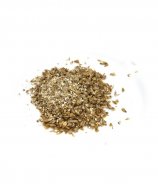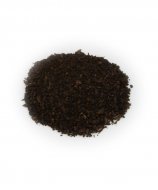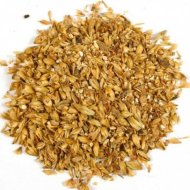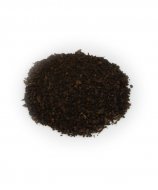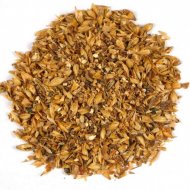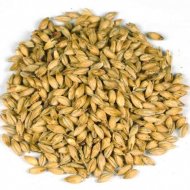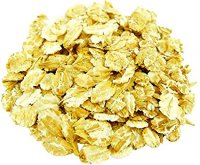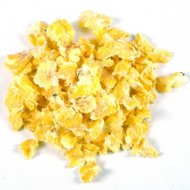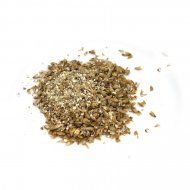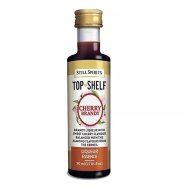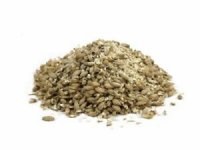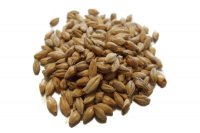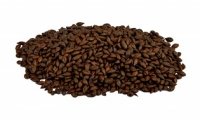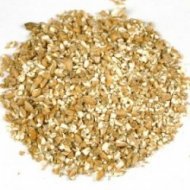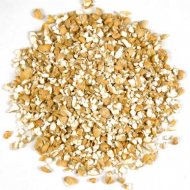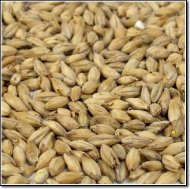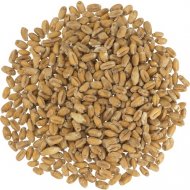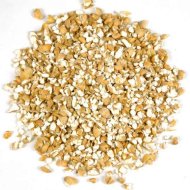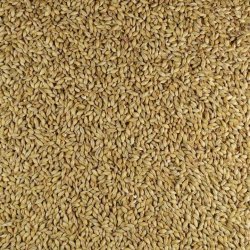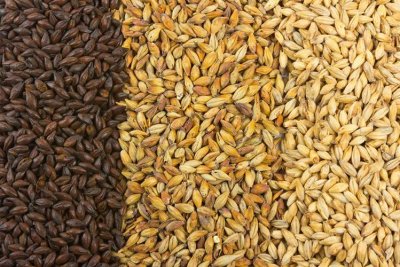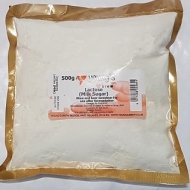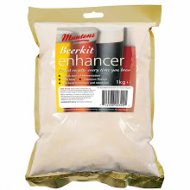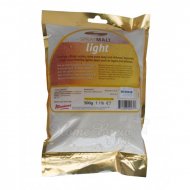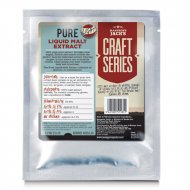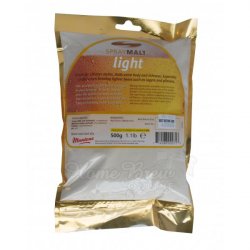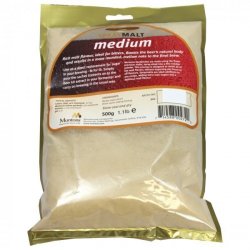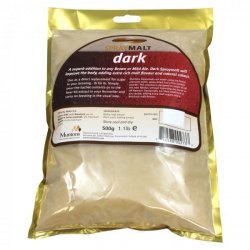What is Malt?
3. Malt - Diastatic and Non Diastatic
6. Malt Extract
7. Is Malt Extract good for you?
Malt is produced from a germinated cereal grain that is dried in a process known as "malting". The grain is encouraged to germinate by soaking it in water, and the grain is then halted from growing further by drying with hot air.
Malting grain develops the enzymes α-amylase and β-amylase. Both are needed for modifying the grains' starches into various types of sugar. These include monosaccharide glucose, disaccharide maltose, trisaccharide maltotriose, and higher sugars called maltodextrins.
The grains develop other enzymes, such as proteases, that break down the proteins in the grain into forms that yeast can use.
Malts
The precise point at which the malting process is halted affects the starch-to-enzyme ratio. The partly converted starch turns into fermentable sugars.
Malt contains small amounts of other sugars, such as fructose and sucrose, which are already present in the grain and are not products of starch modification.
Any further conversion to fermentable sugars is achieved during the mashing process.
Research
Scientists are trying to discover what happens inside barley grains as they become malted. The discovery would help plant breeders produce better malting barley for beverage and food products.
During a traditional malting process, barley is spread out on the floor of a malthouse.
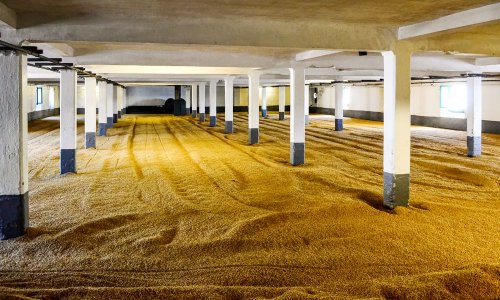
Floor Malting |
Malting is converting mainly barley or other cereal grains into Malt for brewing, distilling, or foods, and takes place in a malting, otherwise called a malting floor or malt house.
During a traditional malting process, the cereal is spread out evenly on the malting floor at a depth of 8 to 12 cm (3 to 4.5 in).
Drying
The malting process begins with drying the grains. The dried grain should achieve a moisture content below 14%. It is then stored for approximately six weeks to overcome seed dormancy.
Steeping
After the drying process, the grain is steeped in water two or three times for two to three days. The steeping allows the grain to absorb moisture and encourages sprouting.
Germination
When the grain's moisture content is around 46%, it is transferred to the malting or germination floor. The grain is constantly turned over using a malt shovel for a few days while air-dried.
Pre-toasting
The grain at this stage is called "green malt". The following process is to dry and toast it in an oven (or kiln) to the desired specification and colour. Malts can range in colour from very pale through crystal and amber to chocolate or black malts.
Smoking
The sprouted grain can be further dried and smoked by spreading it on a perforated wooden floor. Smoke via smoking channels from the oasting fireplace is used to heat the wooden floor and, consequently, the sprouted grains.
The best temperature is approximately 55 °C (131 °F).
A "maltings" is typically an elongated, single-storey building. It has a floor that slopes from one end of the building to the other.

Malting Building |
During the 1940s, floor maltings began to be phased out in favour of "pneumatic plants". These plants have large industrial fans to blow air through the germinating grain beds and pass hot air through the Malt, which is being kilned.
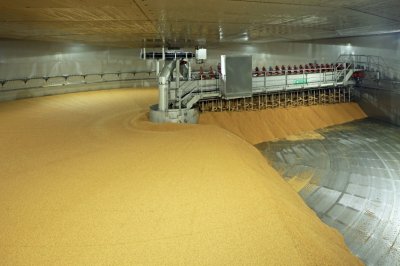
Pneumatic Plant |
In the same manner as floor maltings, pneumatic plants use batch processes but of considerably greater size, typically 100-ton batches compared with 20-ton collections of floor maltings.
Production
Barley is the most commonly malted grain, partly because of its high content of enzymes, though oats, wheat, rye, rice, and corn are also used. Also significant is the retention of the grain's husk, even after threshing, unlike the bare seeds of threshed wheat or rye. The grains husk protects the growing acrospire (developing plant embryo) from damage during malting. A damaged grain husk can easily lead to mould growth.;
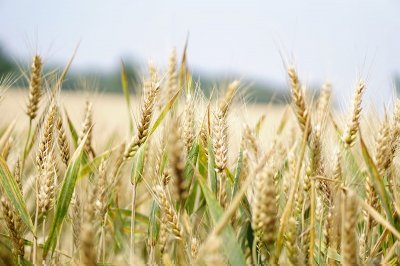
Barley |
3. Malt - Diastatic and Non Diastatic
As the grains sprout, natural enzymes within the grain break down the starch, of which the grain is composed of simpler sugars. These simpler sugars taste sweet and are more accessible for yeast to use as food.
Malt with an active enzyme is named "diastatic malt".
Malt with an inactive enzyme is named "nondiastatic malt".
The enzymes are deactivated when heating the Malt.
The mort is filtered to remove the spent grains and then evaporated to remove 80% of the water, leaving thick, sticky LME.
The liquid is sent through a centrifuge to separate the juice from the Malt, leaving DME powder.
Brewers often divide Malt into two categories: base malts and speciality malts.
Base malts have ample diastatic power to convert their starch.
The starch from unmalted grain is referred to as an adjunct.
Speciality malts have little diastatic power but provide flavour, colour, or "body" (viscosity) to the finished beer.
Speciality caramel or crystal malts have been subjected to heat treatment to convert their starches to sugars.
Various types are distinguished mainly by the kilning temperature.
In the next step, brewers use mashing to extract the sugars.
Brewer's warm cracked Malt in temperature-modulated water activates the enzymes, which cleave more of the Malt's remaining starch into various sugars, the most significant percentage of which is Maltose.
Modern beer-mashing practices use high enough temperatures at mash-out to deactivate remaining enzymes. Thus it is no longer diastatic.
The liquid from this wort is concentrated using heat or a vacuum to evaporate the mixture.
The concentrated wort is called malt extract.
Brewers can use a liquid (LME) or dry (DME) form.
Each has its merits, so the choice depends on the individual brewer's preferences.
Malt extract is the amount of soluble material extracted from the Malt during mashing. Malt extract is a crucial parameter in assessing the quality of the grain, but an assessment of this trait needs large amounts of grain.
Malt extract is derived from barley grains and water. It is packed with sugars plus some nutrients, including vitamin A and riboflavin. After the war, it was famous as a dietary supplement for malnourished children. After decades of relative oblivion outside of home brewing, it is starting to creep back into our collective consciousness.
Dried & Liquid Malts
Brew Mart has two variations of Malt Extract for Home Brewing.
Dried Malt Extract (DME) and Liquid Malt Extract (LME).
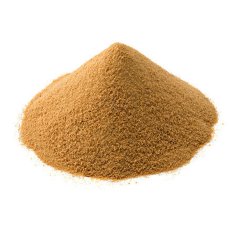
Dried Malt Extract (DME) |
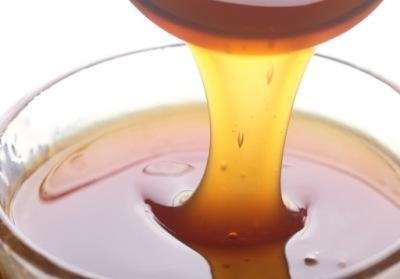
Liquid Malt Extract (LME) |
Home brewing malt extracts - liquid in a can and spray-dried
Malt is always a familiar ingredient if you brew your beer.
Both DME and LME tend to be available in at least three familiar variations:
Light, medium and dark.
There are also more specialised variations like Maris Otter, a pilsner, wheat, extra-pale and amber, to name a few.
1. Are Spray Malt and Dried Malt Extra (DME) the same?
Yes. You will often see Spray Malt, Spray Dried Malt, and Spraymalt for sale. It is all Dried Malt Extract.
2. What is the difference between Dried Malt Extract (DME) and Liquid Malt Extract (LME)
Liquid malt extract (LME) has a consistency a bit like molasses. It is available in both cans and pouches, depending on the make. Dried malt extract (DME) is a fine sticky powder.
Whilst both LME & DME behave the same when using them in beer making, the home brewer's primary consideration is that they are easy to store once they are opened.
LME contained in sealed tins and pouches does store for a long time. The use by date is often months, sometimes years. However, once you open the container or bag, ideally, you need to use all of its contents.
It is difficult to store any leftovers as the LME degrades over time. Most containers of LME state that malt will darken with heat and age.
Meanwhile, DME is simple to store once you've opened the pack. Just put what you haven't used in an air-tight container and keep it sealed until you need it again.
Liquid malt is a sticky syrup-like product that provides vital sugars, flavours & aromas for your home brew.
The use of Malted grain in the production of beer?
The name "malt" refers to several products of the brewing process:
The grains to which this process is applied, for example, malted barley.
7. Is Malt Extract good for you?
Malt extract, which may also be known as extract of Malt, is a treacle-like, sweet substance used as a dietary supplement.
Malt Extract was popular in the early 1900s as a nutritional supplement for British urban working-class children. The belief at that time was their diet was often deficient in vitamins and minerals. Children were also given cod liver oil for the same reason. However, it proved so unpalatable that the powers that be decided to produce "Malt and Cod-Liver Oil."
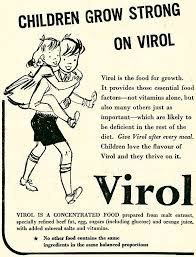
Children grow strong on Virol |

Virol |
Combining the two products made it more acceptable to the children.
In the early 1900s, malt extract was sold in the U.S. as a tonic for pregnant mothers.
Malt drinks are high in calcium, magnesium and phosphorus,
which help to keep the body strong and can also have long-term health benefits for bone health.
Humans have consumed barley in some form or other for over 10,000 years. The popular barley grain from which malt extract is derived was a staple of Roman gladiators, called hordearri or "barley-eaters."
Malt's complete nutritional properties are only recently appreciated by nutritional science.
Recent research to reduce sugar in snacks has found not all sugars are created equal.
Growing scientific consensus says one of the most common components of sugar, fructose, can be harmful to the liver. However, Maltose is a simple disaccharide sugar consisting of only two bonded glucose molecules, and it contains less than 1% fructose. Many snacks have added sugars which contain high amounts of fructose. Table sugar and sweeteners that may sound healthy, like organic cane syrup, also have 50% fructose.
Fructose is implicated in several metabolic disorders due to how the body processes it, in contrast to glucose.
Unlike other sugars, the liver processes fructose.
As well obesity, since 1980, concerns have grown about two new conditions linked to fructose consumption from added sugar:
1. Non-alcoholic fatty liver disease, characterised by an excess fat build-up in the liver;
2. Non-alcoholic steatohepatitis, characterised by fatty liver, inflammation and "steatosis"—scarring that cuts the blood flow to the liver.
Maltose overcomes these dangers. The sugar in malt extract is mainly Maltose, which breaks down into the single sugar glucose. Glucose may be used by virtually every cell in the human body.
Glucose is the preferred energy source for the brain.
Muscle cells can import glucose from the blood for a quick energy boost. Specific cells, such as red blood cells may only use glucose for energy.
Malt extract is more than just Maltose. Malt extract—unlike other refined sweeteners such as brown sugar, table sugar, rice syrup, corn syrup, tapioca syrup, and artificial sweeteners like aspartame—is rich in nutrition.
Malt extract contains protein, essential amino acids, soluble fibres, vitamins B2, B3 and B6, calcium, iron, potassium, and the micro-minerals magnesium, manganese and selenium.
Refined sugar and artificial sweeteners do not contain any of these nutrients.
While no "empty calorie," the real nutritional punch of malt extract is found in its complement of antioxidants, notably polyphenols, which have health benefits, the benefits include anti-inflammation, anti-tumour, anti-cancer, anti-microbial and anti-allergy.
For snack food products, malt extract is truly a sweetener with substance as it is abundant with nutrients.
Check out all brew Mart's home brew hints & tips












